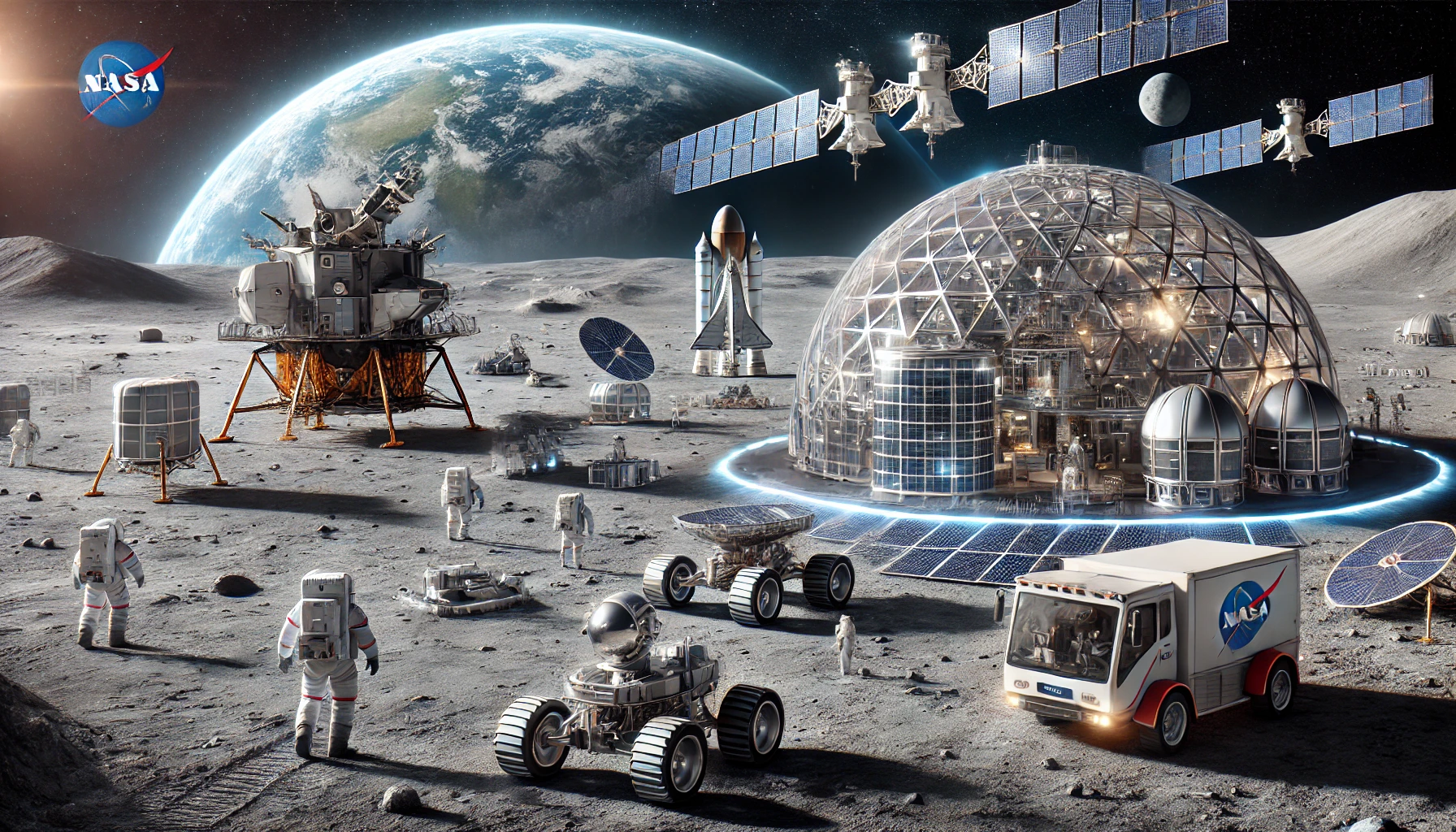The New Frontier: How NASA's Artemis Program is Paving the Way for Human Settlement on the Moon

The Artemis Program: NASA's Giant Leap
Ever since the Apollo missions, humanity has dreamed of going back to the Moon, and this time we’re not just aiming for a short visit. Enter NASA’s Artemis program, a plan that’s not only about setting foot on the lunar surface but also about staying for the long haul. Artemis is designed to establish a sustainable human presence on the Moon, potentially turning it into our new outpost in space. NASA is pulling out all the stops, combining new technologies, international partnerships, and some serious ambitions. In short, Artemis is about taking humanity’s relationship with the Moon to the next level. Think of it as our ‘moving in together’ moment with our celestial neighbor.
Key Technologies That Are Making Lunar Living Possible
So, how exactly do you make the Moon livable for humans? Great question. The Artemis program is developing some cutting-edge technologies to make lunar life a reality. One of the most exciting pieces of tech is the Lunar Gateway, a space station that will orbit the Moon and serve as a jumping-off point for missions. Think of it as an interplanetary Airbnb, offering a place to stay and regroup before heading down to the lunar surface. Additionally, NASA is working on developing new spacesuits, landers, and vehicles. For example, the Lunar Terrain Vehicle (LTV) will allow astronauts to zip around the Moon in style, like a lunar golf cart, but cooler. And let’s not forget about the habitats! NASA is looking into inflatable structures, which, yes, sound like the world's most advanced bouncy houses, but they could be the key to making long-term lunar living possible.
Lunar Sustainability: Building a Permanent Presence
Staying on the Moon isn’t just about surviving a few days and planting a flag. NASA is thinking big. Artemis aims to set up a sustainable lunar presence, meaning astronauts will need to be able to live off the land—or Moon, in this case. This includes harvesting resources like water from the lunar surface. Water is key because it can be broken down into hydrogen and oxygen, which can be used for breathing or rocket fuel (basically turning the Moon into a giant gas station for space travel). Another key aspect is energy. The Moon doesn’t exactly come with a plug-in station, so NASA is researching ways to generate solar power that could be used by future lunar bases. The ultimate goal? To make the Moon a permanent outpost for humans, allowing us to explore even further into space.
Challenges of Life on the Moon: It’s Not All Moon Pies and Fun
While living on the Moon sounds like a sci-fi dream, it’s not all zero gravity fun. There are a few challenges to tackle before humans can call the Moon home. First off, there’s no atmosphere on the Moon, so you can forget about breathing the fresh lunar air (because there isn’t any). This means every breath will depend on technology. Then there’s the Moon dust, which is like the glitter of space—once it gets on you, it’s impossible to get rid of. Moon dust is so fine and sharp that it can damage equipment, harm spacesuits, and even pose health risks to astronauts. And don’t get us started on the temperature swings! The Moon's surface goes from boiling hot during the day to freezing cold at night. To survive these conditions, future lunar inhabitants will need advanced climate control systems and state-of-the-art habitats.
What’s Next for the Artemis Program and Lunar Exploration?
With Artemis I already launched and Artemis II preparing for its manned mission, NASA’s roadmap for lunar exploration is moving full speed ahead. Artemis III, scheduled for the next few years, will mark humanity’s return to the lunar surface. But unlike the brief Apollo visits, Artemis III aims to stay longer, making use of the technologies we discussed to build a lasting presence. Beyond that, NASA’s ambitions include using the Moon as a stepping stone for even greater exploration. Yes, we’re talking about Mars. If we can figure out how to live sustainably on the Moon, then Mars—despite being a bit further away—might not be that much of a stretch. So, the Artemis program is just the beginning of humanity’s spacefaring future.
Will We Really Settle on the Moon?
So, will we really be living on the Moon in our lifetime? It’s not as far-fetched as it once seemed. With NASA’s Artemis program leading the charge and the growing interest from private companies like SpaceX, it looks more possible than ever. Of course, there are still numerous challenges to overcome—like how to create sustainable living conditions and protect astronauts from the harsh lunar environment. But if humanity can tackle these obstacles, we might just see the first human settlement on the Moon in the coming decades. So, what do you think? Could you see yourself calling the Moon home one day?



